Doublefile Viburnum
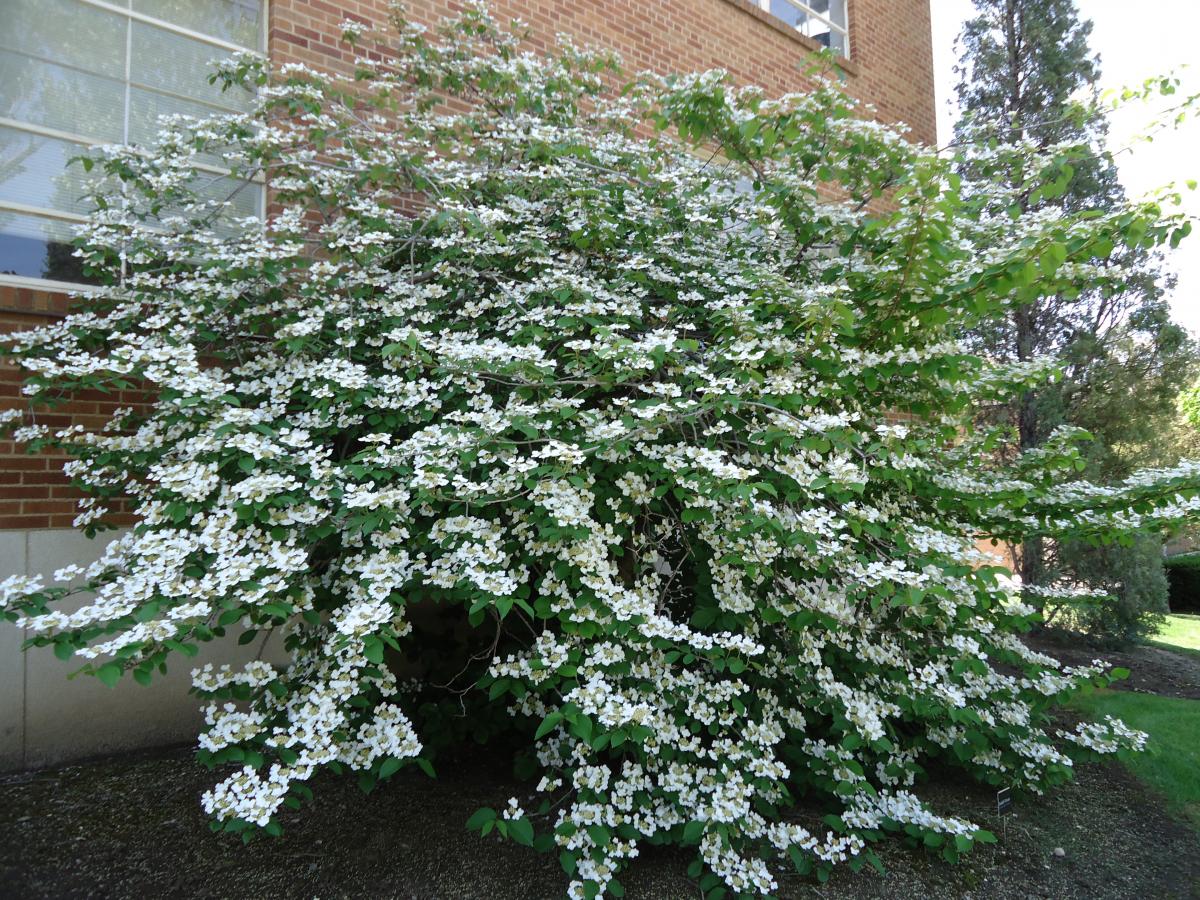
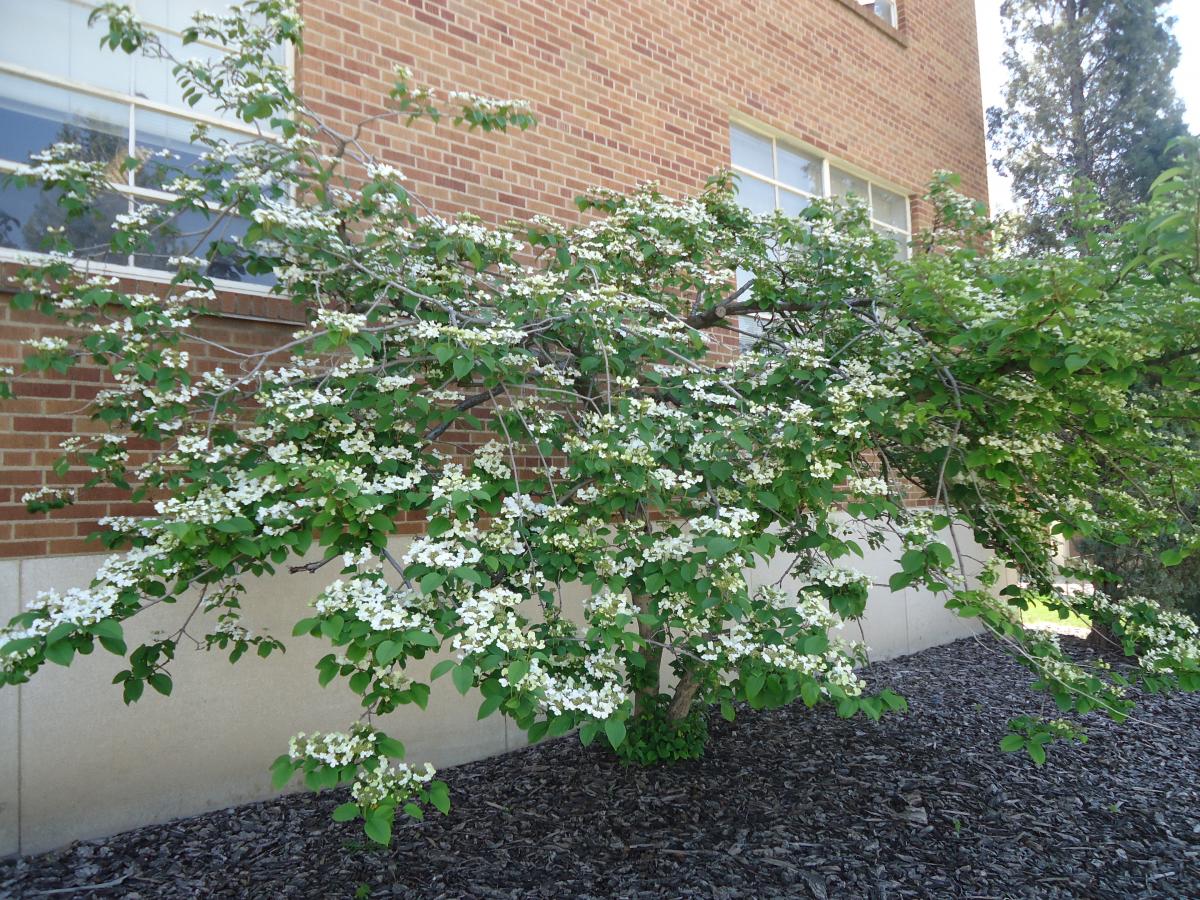
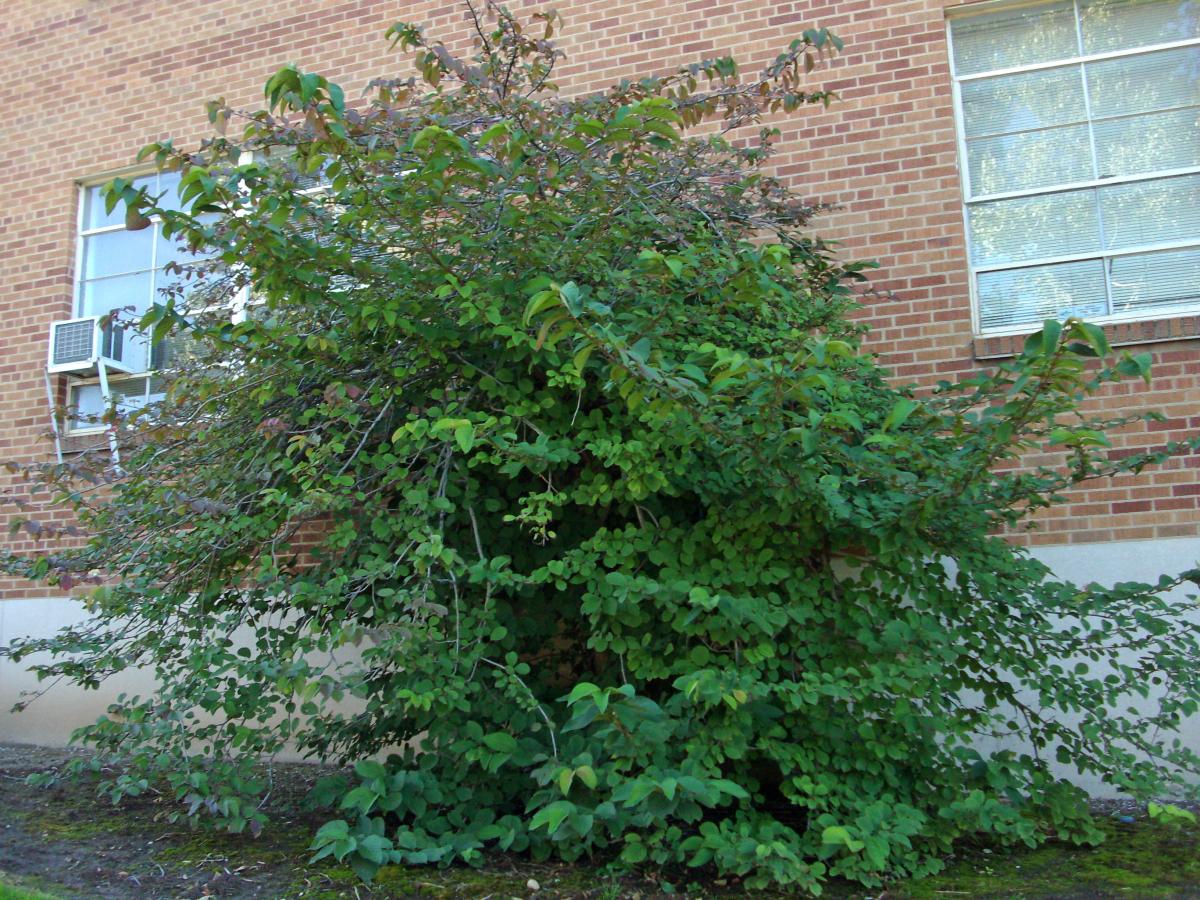
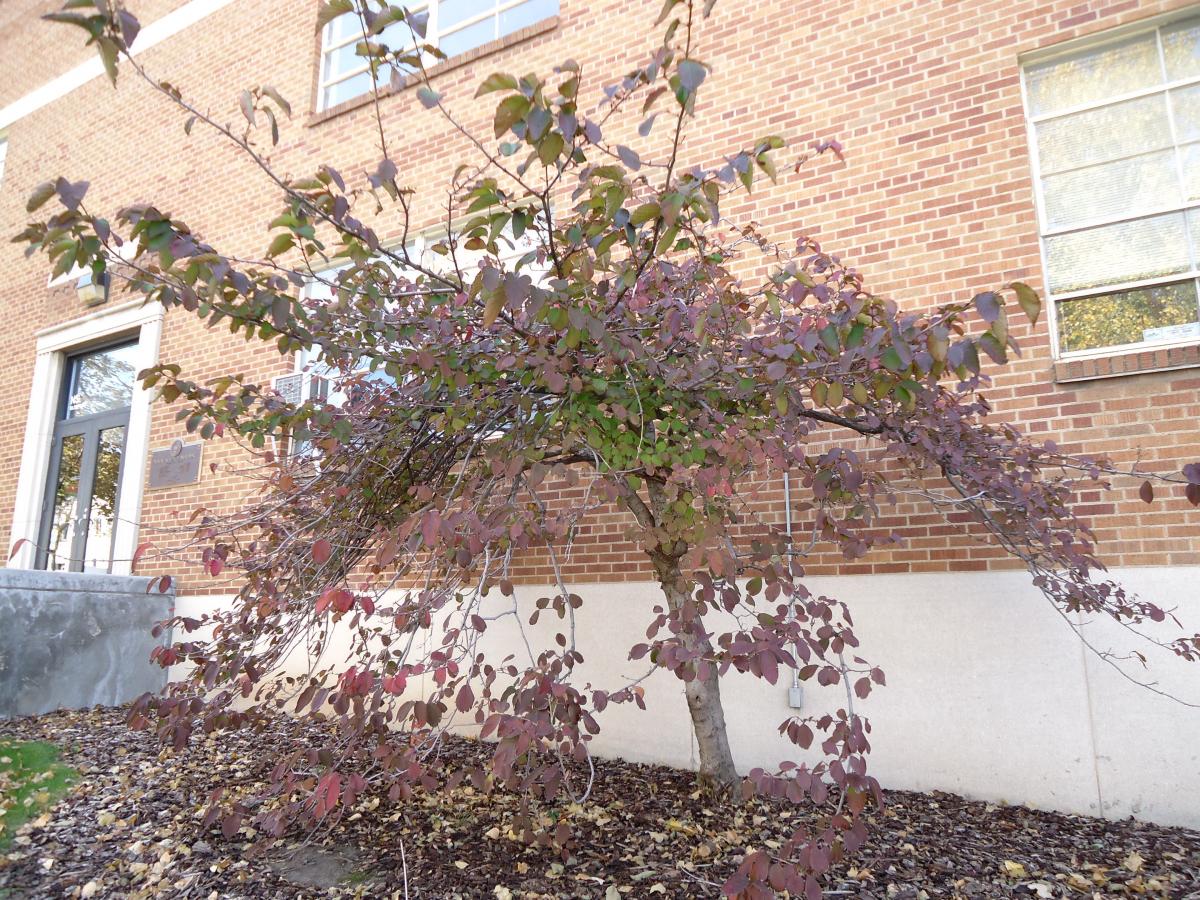
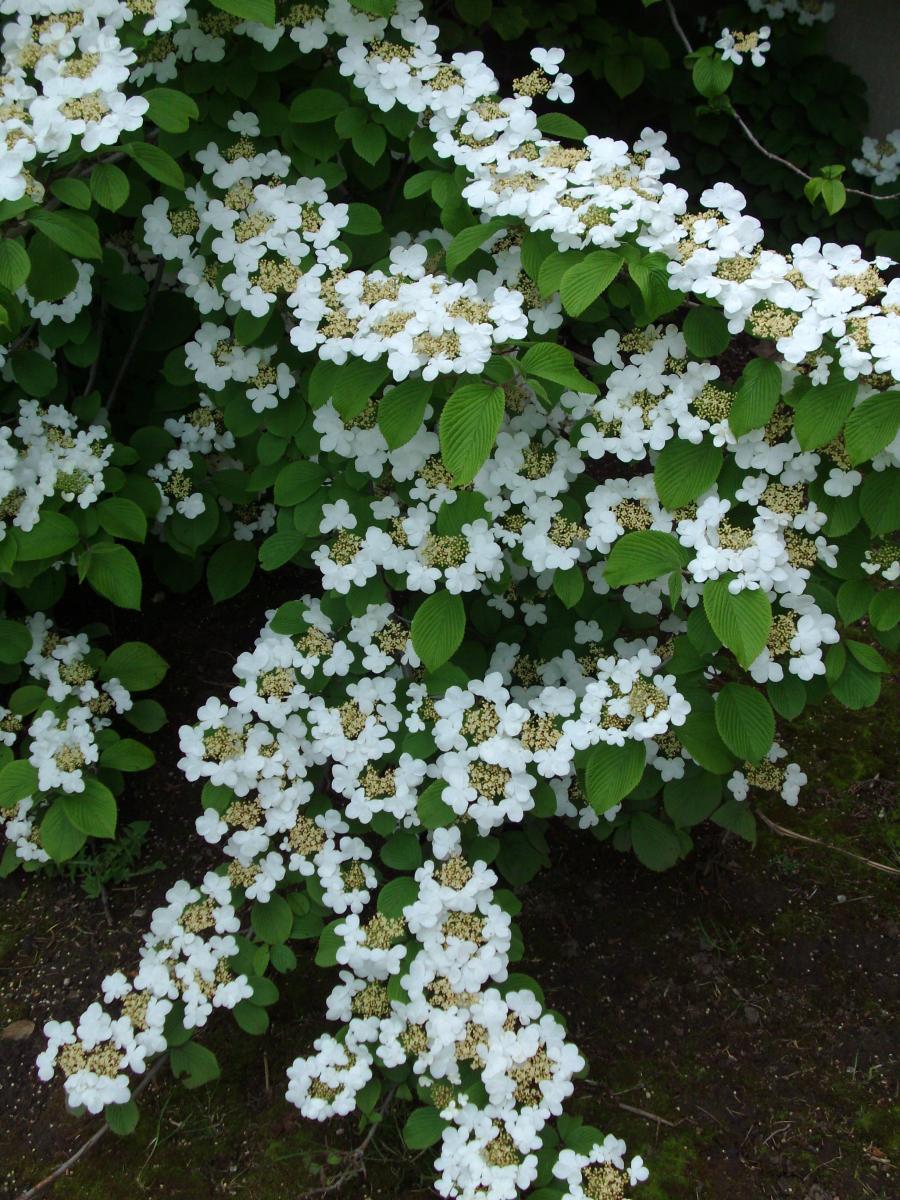
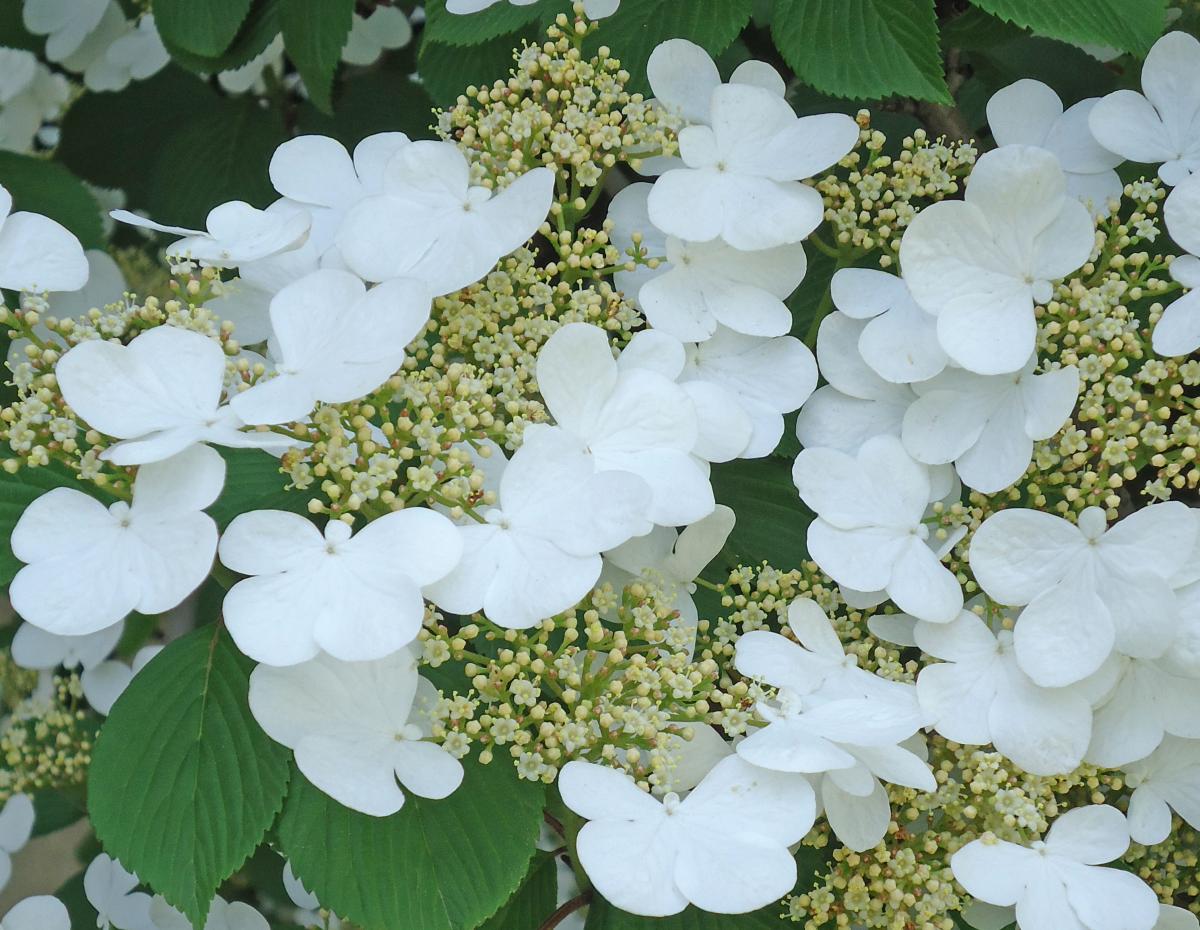
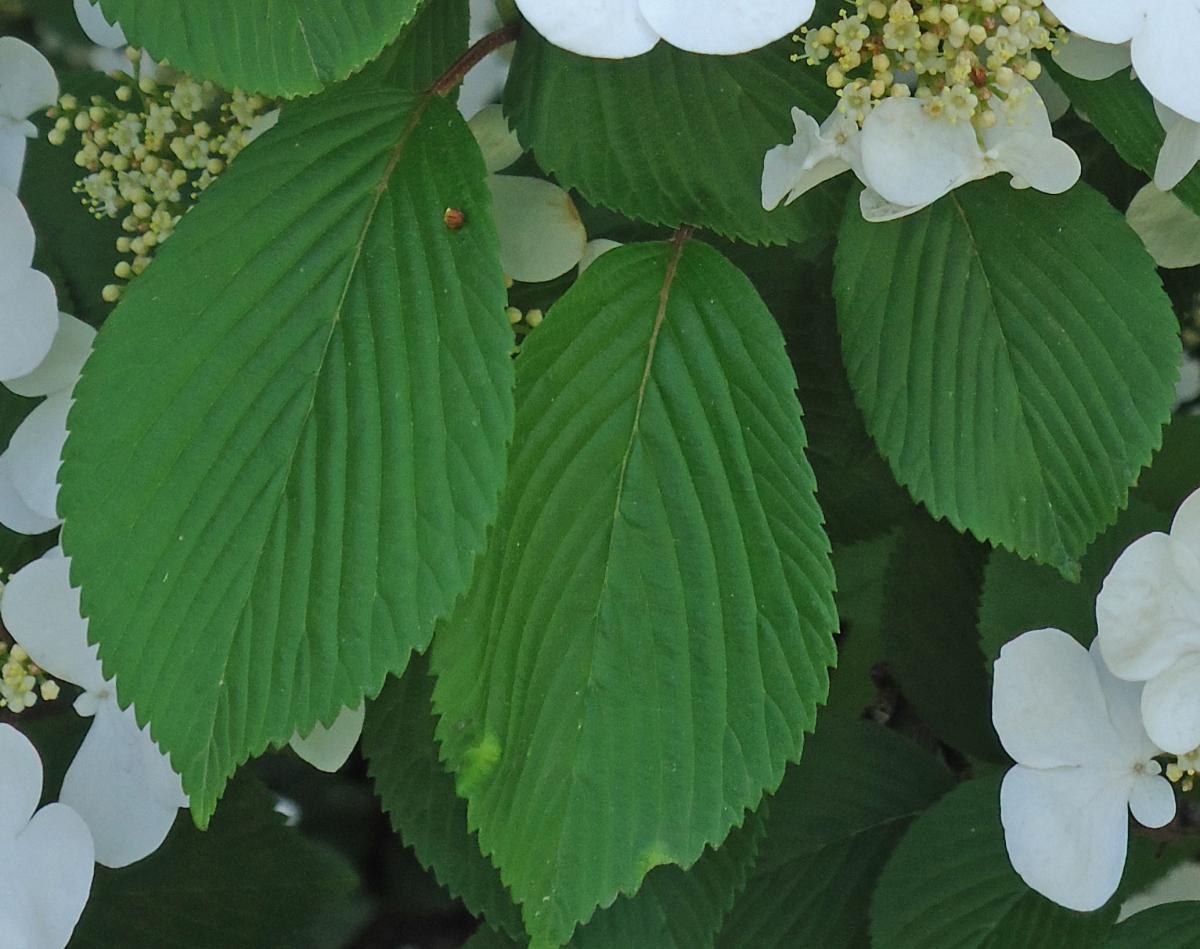
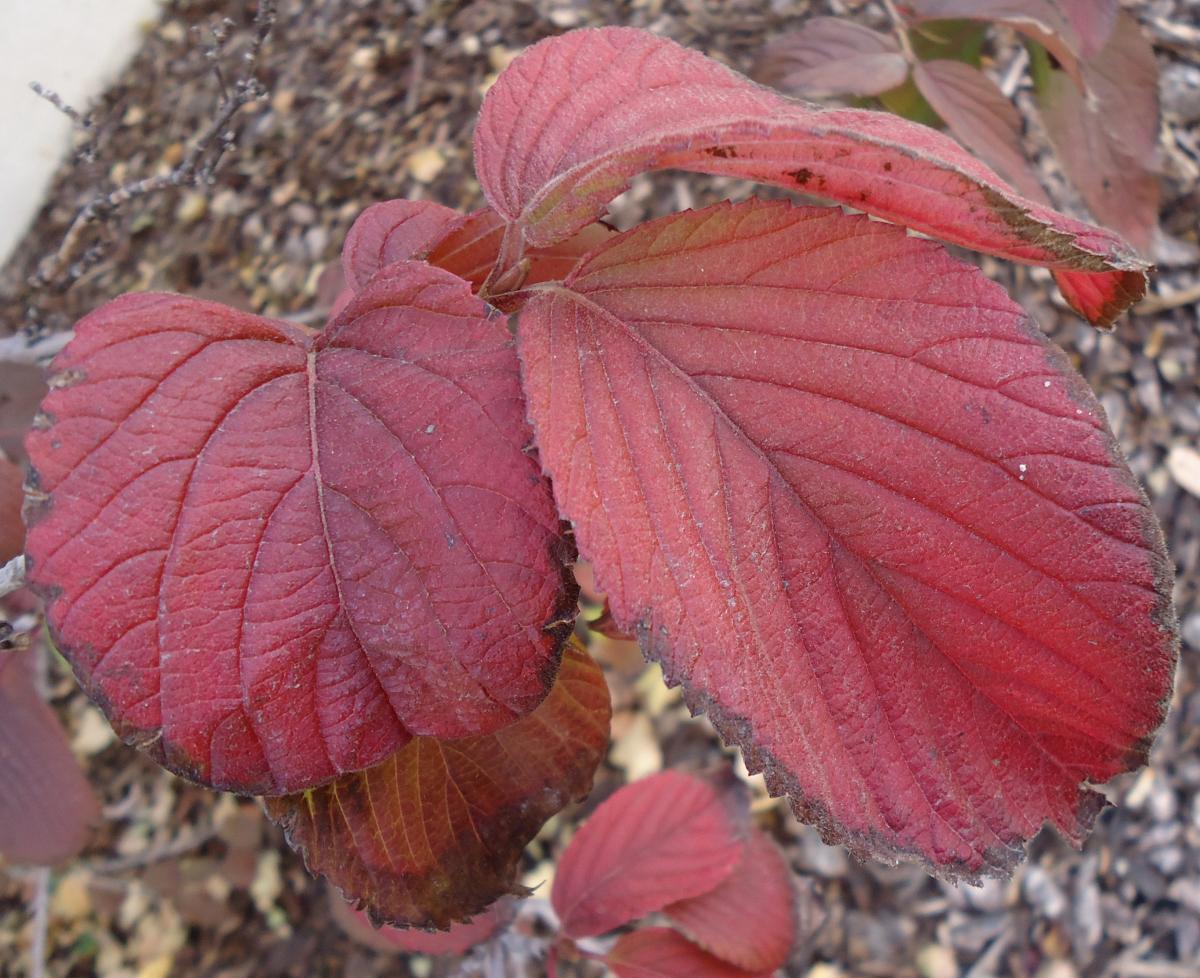
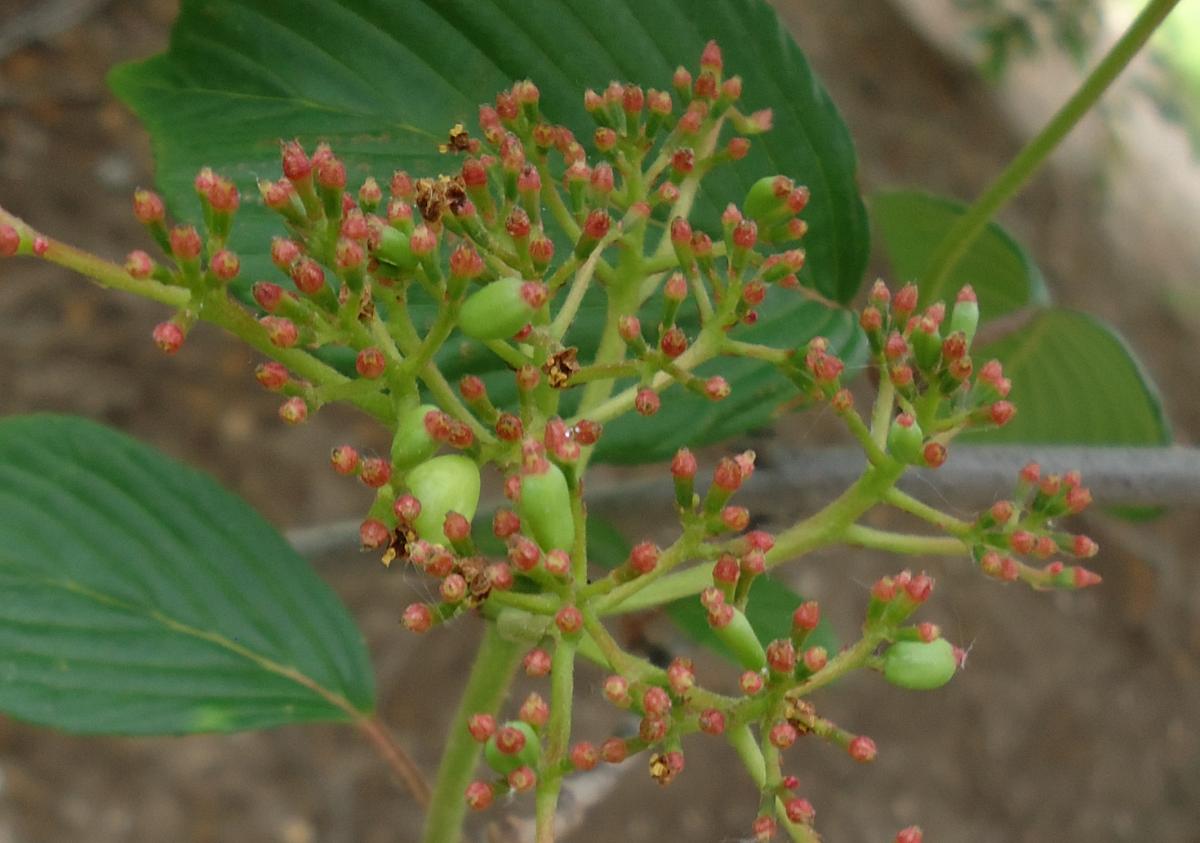
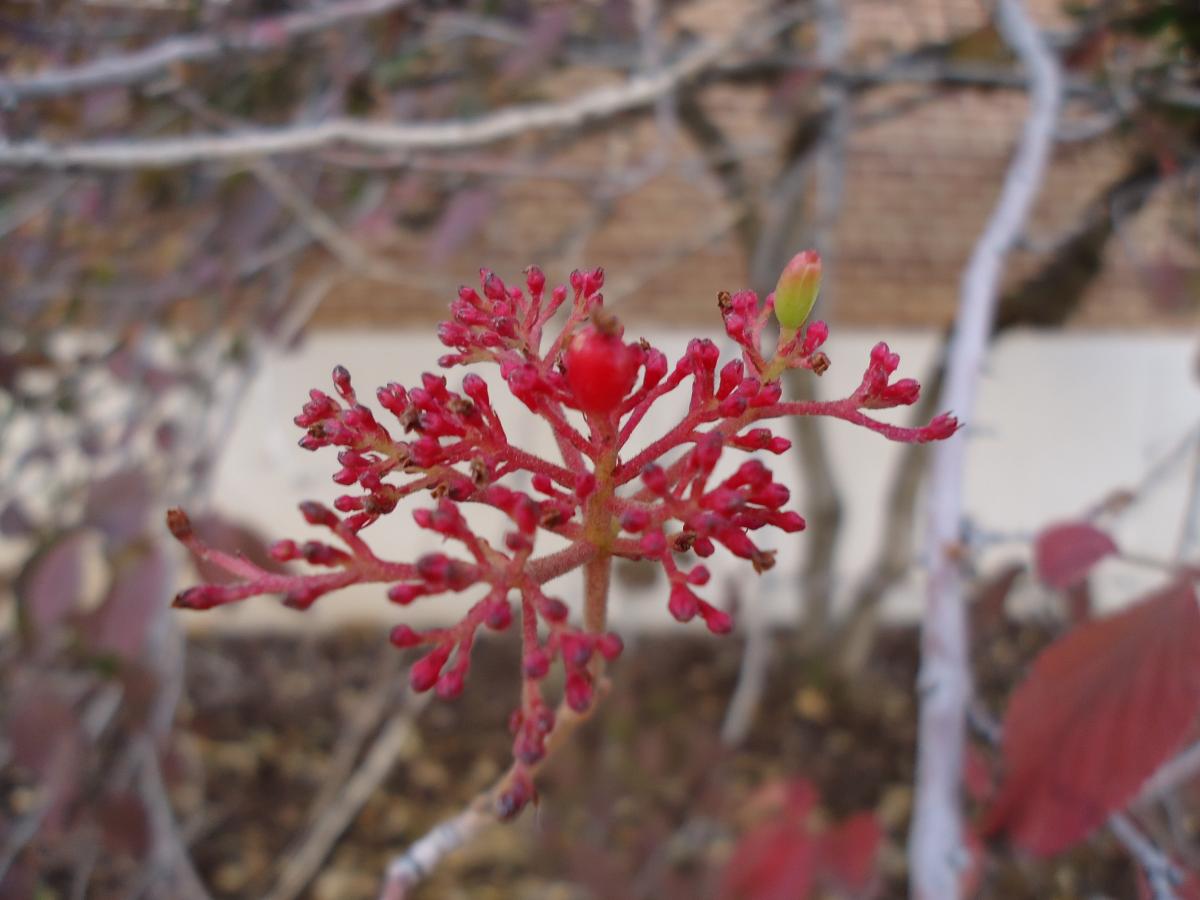
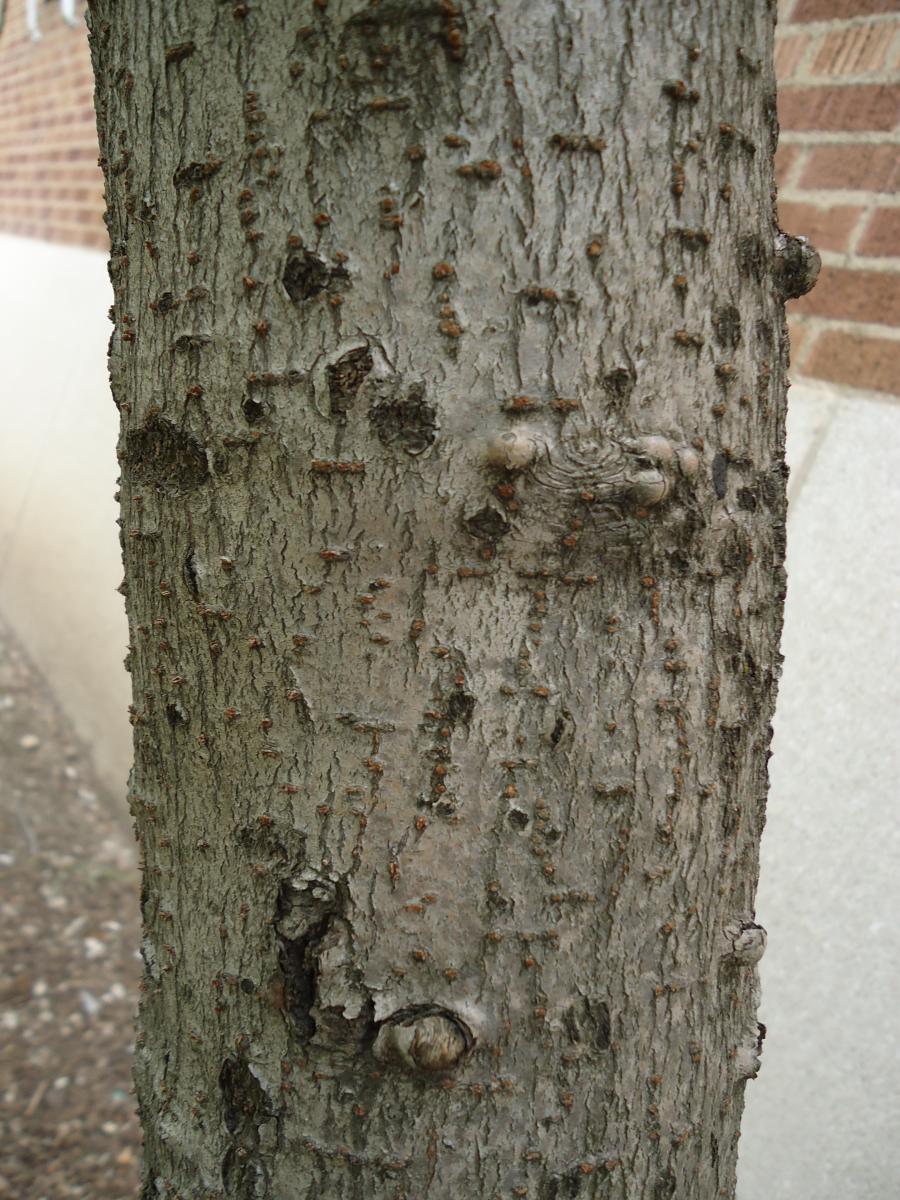
Viburnum plicatum var. tomentosum
Leaves: Deciduous. Oval leaf shape, 2 to 4 inch long, 1 to 2 inch wide, with a pointed tip, rounded leaf base, and serrated leaf edge. Dark green leaf color with veins in a fishbone branching pattern. Emerges in early spring. Autumn color is reddish purple.
Bark/Twigs: Older branches are dark gray or brownish gray-brown in color. Young stems are densely covered with short matted woolly hairs (tomentose), with orange dots called lenticels.
Flowers/Fruit: Pure snow white flowers with no fragrance. Individual flowers form a large, 2 to 4 inch (up to 6 inch) diameter, flat-topped cluster called a cyme. Cymes are composed of outer, showy, very attractive, infertile, sterile individual flowers with 4 to 5 lobes, ¾ to 1½ inch wide, in a ring around smaller, inner, not showy fertile flowers. Blooms in mid spring (May). The inner circle of fertile flowers will develop into fruit, loved by birds. Bright red, egg-shaped, small, ⅓ inch long fruit (drupe), form in clusters in late summer, maturing in August to a black color.
Mature size and shape: Small. 8 to 10 feet high x 9 to 12 feet wide. Broad rounded shape. Horizontal, characteristic layered or tiered branching. Is actually a shrub, but can be formed into a tree.
General information/special features: Plant in full sun to partial shade. Demands moist, well-drained soil, but is soil adaptable. Avoid locations with poorly drained or heavy soils. Fibrous roots does not tolerate heavy, clay, poor-drained soil.
Landscape use and maintenance: Good ornamental shrub. Average growing rate. Average maintenance. Prune after flowering. Transplants easily. No serious insect or disease problems.
USDA Hardiness Zone: 5 to 8
Family/Origin: Adoxaceae – Viburnum family. Native to China and Japan.
Campus Use: Rare. Only specimen. Can be found north of Navel Science Building (Bld 43).
